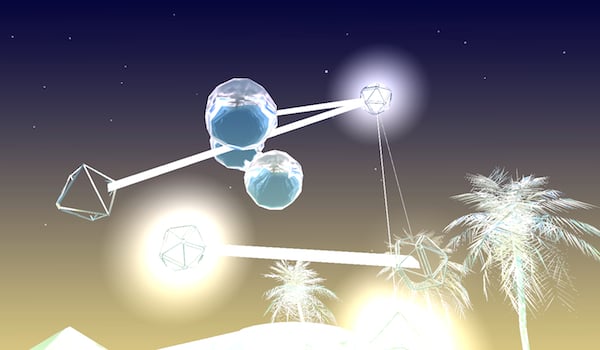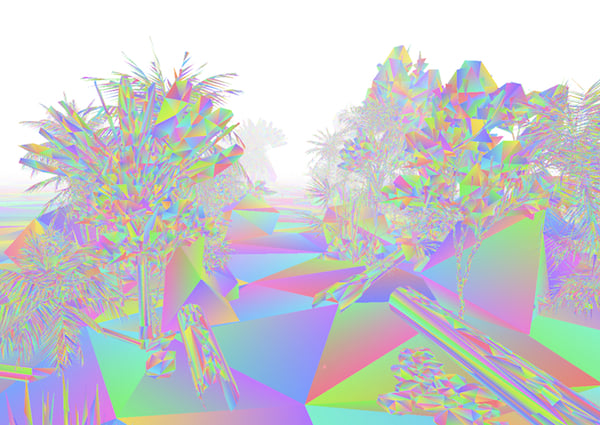Art World
Addictive Single-Serving Websites by 7 Artists
The popular meme is a hallmark of Internet art.

The popular meme is a hallmark of Internet art.


Vince McKelvie, Honey (2014).
Screengrab via hhhoneyyy.net.
Single-serving websites are everywhere. These are sites comprised of a single page that typically has a dedicated URL and does one thing. Many of my favorites are listed in Know Your Meme‘s entry on this type of site, like Purple.com, which was made in 1994 and is the earliest example of a single-serving site. It has spawned many successors, like the popular 2007 website SometimesRedSometimesBlue.com, by artist Damon Zucconi. HowManyPeopleAreInSpaceRightNow.com is another example; it’s a counter that displays the number of human beings currently in outer space. And finally, DoNothingFor2Minutes.com tops my list for ineffective procrastination tools. It is a picture of a sunset over water with a two-minute timer that counts down the time during which you don’t use the keyboard. I lasted exactly two seconds before triggering the fail button.
Unsurprisingly, many artists who use the Internet as a medium have created these kinds of websites. I began to pull together some of the more notable examples in hopes of uncovering a common approach that distinguishes these art pieces from the larger web meme. Typically, familiar art concerns dictate each site’s singular function, be it color, subversion of or reflection on the medium. But often that isn’t the essential hook. For me, the best single-serving art sites require interaction of some kind to activate the piece, even if all that means is clicking an ad.
Given these criteria, I’ve whittled down dozens of single-serving art websites to works by six artists who’ve made successful pieces, spanning from 2014 all the way back to 1994.

Vince McKelvie, Gradient Forest (2014).
Screengrab.
Vince McKelvie, Gradient Forest 2014 and Honey 2014.
Even McKelvie’s Tumblr reflects his interest in the single-page artwork; the entire site looks like it’s been run through a gifmelter. Gradient Forest, which is hosted on the artist’s website and scored by the band YEARS, takes you on a trip through a thicket of constantly sprouting trees of psychedelic color gradients. Users can navigate with their mouse from the sky or the ground, and even choose their own music should they want to make repeat trips.
Honey functions similarly, though it’s arguably a more advanced journey. As a user you’re not always sure how your mouse affects the trip (scored this time by the band James Deen), but you’re pretty sure it does something. Maybe. This disorientation occurs because the user’s cursor disappears whenever it’s over the browser, an effect that doesn’t immediately register—I spent most of a session looking for my cursor before realizing the work was designed to conceal it. [h/t Prosthetic Knowledge.]
Harm van den Dorpel and Jonas Lund, Wishing Well, 2013.
Move your mouse around van den Dorpel and Lund’s Wishing Well and you’ll hear the sound of droplets falling in the pool and see their ripples roll over the coins. That alone makes the site worth spending a bit of time on, as its meditative qualities are transfixing. Eventually, a pop-up will ask if you want to donate a coin to the well. You can choose your currency. I chose 25 cents, which I was immediately able to watch float down into the well. That was a little anti-climactic—there’s no sound effect for the donation—but you can at least see where your money goes.
Anthony Antonellis, Floaters: Detached Retinal Display, 2012.
Microsoft Windows XP was released way back in 2001, but even those of us with Apple computers are familiar with the operating system’s default desktop wallpaper. It’s a photograph of Sonoma County, California, and the grass covering the hills is an unearthly shade of green. These days, this wallpaper mostly turns up in image searches, which informs the title of Antonellis’ Floaters: Detached Retinal Display.
The rest of the piece involves placing floaters that move with the user’s cursor over the image. It’s ingenious; the gesture resembles what actual floaters do in the light—they seem to move in the direction of one’s gaze. The piece touches on the loss of vision associated with both detached retinas and Microsoft’s outdated operating system.

Rafael Rozendaal, Color Flip (2008).
Screengrab via ColorFlip.com.
Rafaël Rozendaal, Color Flip, 2008.
Arguably the best-known artist in the field of one-off art websites, Rozendaal’s Color Flip gets 50 million visitors annually and even is even cited on the Know Your Meme database. With this piece, the page loads as a single color. Hover your mouse over a corner and the page folds up, revealing a new color concealed underneath. Click the corner and the top color will peel off.
This isn’t a site that runs on cleverness, but rather the simple satisfaction derived from turning a page. A number of Rozendaal’s websites function similarly, 2008’s paper-toilet and 2011’s falling falling being among my favorites. Many of the artist’s sites use color as subject matter, which is the works’ main connection to the wider field of contemporary art. Another is his use of fabricators. Rozendaal’s hand isn’t the only one in this stew—a company called Box of Chocolates does his coding.
Cory Arcangel, Punk Rock 101, 2006.
A few days before Arcangel’s second solo show at Team Gallery, he created a page on his website displaying Kurt Cobain’s suicide letter and added Google ads to it. In an age where there’s an entire industry built around scraping content off the web, re-posting it, and collecting the revenue from Google ads, it’s hard to see this gesture as punk rock. But that industry was still burgeoning then, and the idea that content could be monetized was still shocking.
Both Arcangel and Olia Lialina (below) host their single-function art websites within their personal pages. That trend hasn’t totally disappeared, but it’s much more common for artists and other Internet creatives to create a unique URL for the experience, typically on that describes the website’s singular function—i.e. SometimesRedSometimesBlue.com.
(Footnote: Arcangel’s entry for Punk Rock 101 on his site shows only ads peddling social anxiety medication, but when I was on the site back in 2006, Google was serving up Nirvana ringtone ads.)
Olia Lialina, If You Want to Clean Your Screen, 1996.
Among the earliest and best single-serving websites, Lialina’s Clean Your Screen uses a black screen to create a deceptively large window. Scroll back and forth on the page, and you’ll roll a picture of a woman’s palm and fingers across the screen as if she’s washing it. On her hand is a stamp with what appears to be a medieval portrait of a woman holding a jar. The image is the artist herself; click on the stamp and your email program opens.
This is a more poignant piece than most, because it reminds viewers there is an artist behind the site. Social media, the Cloud, and blogs that post pictures of us doing things we wish could be forgotten never let us lose sight of that anymore, but there was a time when we needed reminding of this personal touch.